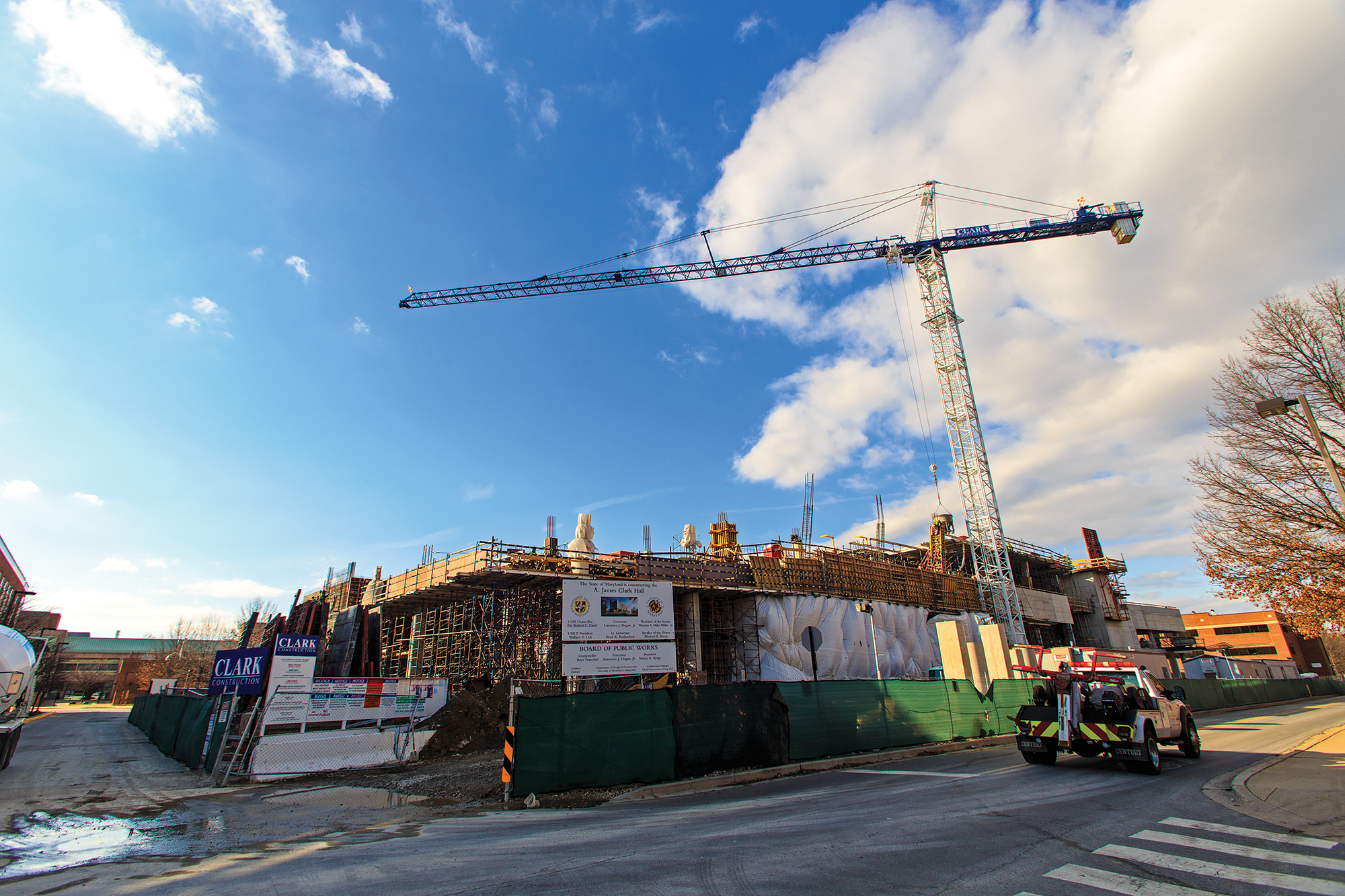Clark Hall construction is slated for completion at the end of June, and will house the University of Maryland bioengineering department’s largest incoming class yet.
Construction on the building — which will house the Fischell Department of Bioengineering and the Robert E. Fischell Institute for Biomedical Devices — is about 75 percent done, said Bill Olen, the executive director of planning and construction. The building will open for classes during the spring 2018 semester, he added.
“It’s one of our largest projects at almost $169 million,” Olen said. “Since there are research labs, there’s millions of dollars of scientific equipment that has to be installed, and that takes a while.”
The construction team is currently finishing the exterior, and starting in July workers will install the furniture and lab equipment into the building, he said. The area, located near the Biomolecular Sciences Building, has been under construction since the groundbreaking ceremony in November 2014.
[Read more: Univ. of Maryland officials break ground for bioengineering building]
The building’s upcoming completion comes at a time of growth for the nearly 11-year-old department, which just admitted its largest incoming class ever, said John Fisher, a Fischell family distinguished professor and bioengineering department chair. This class is about 125 undergraduate students — in the past it’s been closer to 90 or 100 — and 60 percent of it was composed of women, which Fisher said is extraordinary to see in engineering. Women receive about a fifth of bachelor’s degrees in engineering, according to the National Girls Collaborative Project.
“We’re very excited,” Fisher said, referencing the building’s upcoming completion. “I think it’s a wonderful opportunity for us, and we’re very fortunate to have support from campus and the state and everyone to help bring the building, the facilities and the equipment associated with it to the campus and to the department.”
Because the project was both expensive and extensive, Olen said he was surprised there weren’t any delays in the schedule. He attributed the lack of delays to “the quality of the people on my staff, the architects and the builders … they all demonstrated the determination to keep the project on schedule.”
The building will house the first dedicated undergraduate instructional lab in bioengineering at this university, allowing research and instructional programs to flourish, Fisher said. One of the unique aspects of the building is a large, two-story space on the first floor where students can work together and build massive projects. The area was designed to fit cranes for transporting large items, Olen said.
“There are very few spaces — other than the architecture studio — where it’s so open and flexible for different types of engineering projects,” he said. “Next spring, I am looking forward to seeing the students using that collaborative space.”
The large project space is something that sophomore bioengineering major Brian Garner said will benefit the students when it comes to making large-scale projects for competitions.
“Right now there are some workshops where you can make relatively small projects,” he said. “Sometimes it takes really big machinery to build some of the prosthetics or maybe even work on lab equipment, so having a really big space for that would be helpful.” Some bioengineering students take classes in the Jeong H. Kim Engineering Building, but most are spread out in random buildings on the campus, Fisher said.
Garner noted the extra lab space has potential to advance research for this university, because students who are studying in different disciplines will be able to utilize the building’s new resources. Bioengineering students will benefit, but they won’t be the only beneficiaries, he said.
For Fisher, Clark Hall’s main benefit will be the sense of community it brings his department. Many department members are spread throughout the campus, he said, because the department currently doesn’t have its own building. The bioengineering department started in 2006, and is about to celebrate its eleventh anniversary in April.
“Bringing us all together — all the folks in bioengineering — and putting us all in one spot is really going to be transformative,” he said. “Having the students all working together, having the undergraduates have a feeling of a home and a community — I think that’s going to be fantastic.”



